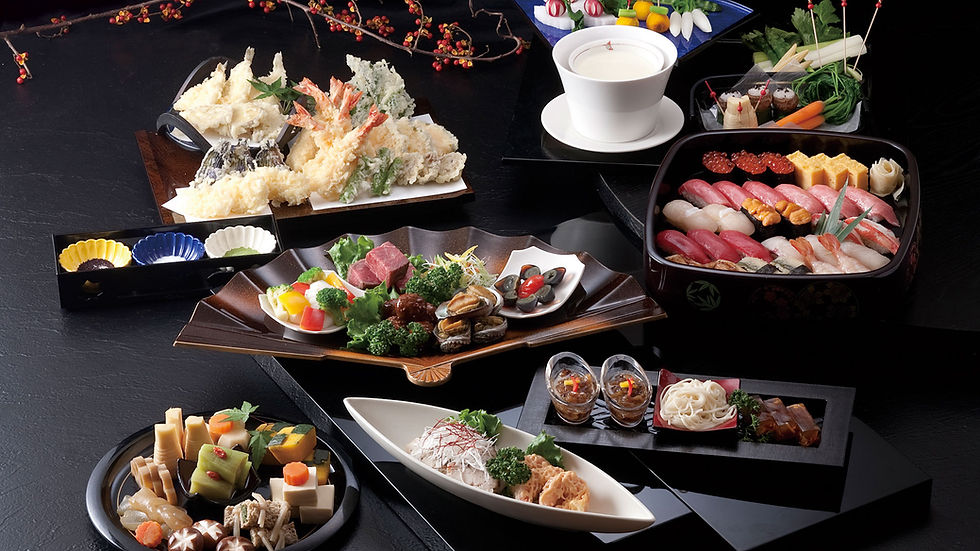
Free member site
The basics of cooking
Enzyme Ingestion and Smoothie
Deadline of life. 100year-old project and nursing care
The Delicious Show of Serving Techniques
From salad to sashimi to sweet desserts, cooking methods are, of course, important but it is also important to note how the style in which meals are served can add to the appreciation of their delicious taste.
Please try to practice the following serving techniques:
◎ basic techniques
Flat serving
If the dishes contain multiple content, serve in a large dish Tairasakari.
Even if in small amounts, such as 1 to 3, serve flat prime arranged in a plane.
By that we mean to ‘place in close contact somewhere south of the cooking with each
other.’ In short, this may be considered as a ‘plane prime.’
Side by side dishes in a plane Incorporate color into the arrangement. If a person is a
beginner, allow their neighbour to be somewhat familiar of as a complimentary plane. If you have done this many times, you will see how the spatial arrangement is best set out.



When human beings see things, their gaze momentarily moves from the upper left to lower right.
Therefore, it will feel sober and best serve a ‘flowing’ formation in the lower
right corner as a starting point, or in many cases, the upper left corner.
If you include a few servings, at first try to begin to bloom from the top left. You will sense have good it feels: beautiful heaven prime splendour.
Nagashi mori
When you include multiple dishes of the same type and same size, use ‘shrinking prime.’ With sushi and sashimi, it is easy to understand. They are sort of the same form and aligned to the same size dishes: show the plane as tilted.


Slope the upper part of the orientation of the dish, which can be either left or right; this is the basic form [left front].
That should lined up to be inclined to the right. While the similar sushi toward the top to the left, let the molar flow from the upper left to the right.


Emitted serving
The simple and clean look of the ‘Emitted serving.’
It also called ‘Every direction,’ ‘All sides,’ and ‘north, south, east, and west.’ Place the emphasis on the up, down, left and right and decide from there. This is best used in a
round type of vessel, but can also be in square dish.


The trick is to draw crosshairs visually first, then center the center it with that of the vessel. In a pattern of four, it will fill the next space.
Serve in the shape of a mountain
Such as a bowl or pot, or a vessel with a deep basic mole.

Small bowl class is [mixed prime]
Wanbutsu is [Asked prime]
Mukozuke the (sashimi, sashimi) [cedar prime]
In a flat vessel (such as a dish), [overlaid prime] and [bales prime] is also Yamagata.
‘Yamagata’ is the very basics of Ready-To-Eat Japanese food.
‘Small Heaven Chidai,’ is thin, but the foundation of the upper needle is thick.
It resembles Mount Fuji! Point to the ‘apex’ from the solid foundation.
If the foundation is weak, it will become vulnerable and detract from the appearance.
★ prime side of the tricks
The trick is to gather in the center.


Sober cuisine will sink even if the mountain formation is solid. In this case, bring something with good form in front.
At the top, put something like Ashirai (heaven prime).
The tip of the front of the bamboo shoots in heaven prime is the Leaf bud
A typical example of ‘tempura’ using a flat bowl.



Ready-To-Eat Advanced
For the professional Ready-To-Eat and Ready-To-Eat amateur.
When ask what's the difference, it is in the use of the space. Specifically, the two-dimensional and 3-dimensional margin (chiefly headspace).
Sprinkle prime
If flat prime is a person relying on serving ‘Hana with the material,’ just arrange it in a straight line. It will be beautifully seen. On the other hand, if the prime is apart
from the cooking uses a two-dimensional margin, then use ‘scattered prime.’
For example, even in the sink prime of sushi, create a space to release the individual components and the flavor will come out differently than in the same sink prime.

This is the basic form of the radiation prime called ‘thorn prime,’ but leaves a feeling of being partially broken.

Sprinkle prime is generally the better prime suitable for Japanese appetizers or eight suns. It is the basic model of three types-Pentathlon-seven kinds cuisine as scattered in
the vessel while taking up the margins.

Sprinkle prime uses a vessel considered as a ‘canvas’ or ‘part of the cuisine.’ You may want to image a landscape painting and Japanese garden.
A good example is a Kakiemon dish. You place things on a diagonal, but it assists the asymmetric features of this prime side.
Non-symmetrical arrangement copies the fractal nature.
In addition, to avoid mediocrity you can add a leading role to one article in the cooking.

Even kind prime skilfully uses the margin of the vessel.


Three-dimensional (three-dimensional) prime
Things that emphasize the various prime way mentioned in the ‘molar shape of a mountain.’ This can also be thought of as ‘painting a picture’ in scattered prime. Even with sink prime, you can put in a three-dimensional effect in order to let it ‘stand.’

Manipulate, 2-D and 3-D

Cooking is not a painting, it is a ‘three-dimensional object.’
When do you emphasize the three-dimensional effect and when not to emphasize it. It is important not to forget the sharpness of presentation. The two-dimensional is that of a point, line or plane. The important elements that complement the three-dimensional.
3D works best by using a two-dimensional base as well to help the cuisine really shine.


Tips Summary of Ready-To-Eat
The high beyond, lower front or high center Wide margin.
Remember these three as the basis for the Ready-To-Eat
Japanese cuisine.
★★ ーーーーーー
· Simple Is Best in arranging the idea of ‘good looking food.’
That is what we bear in mind when considering the beauty of a dish. Another important thing is also if it is ‘easy to eat.’ If cooking for guests, this is a major
consideration.
A reasonable arrangement in cooking brings into view a beautiful strange thing.
Too much makeup only be see as negative. Please be aware of how to ‘discharge
the waste.’







